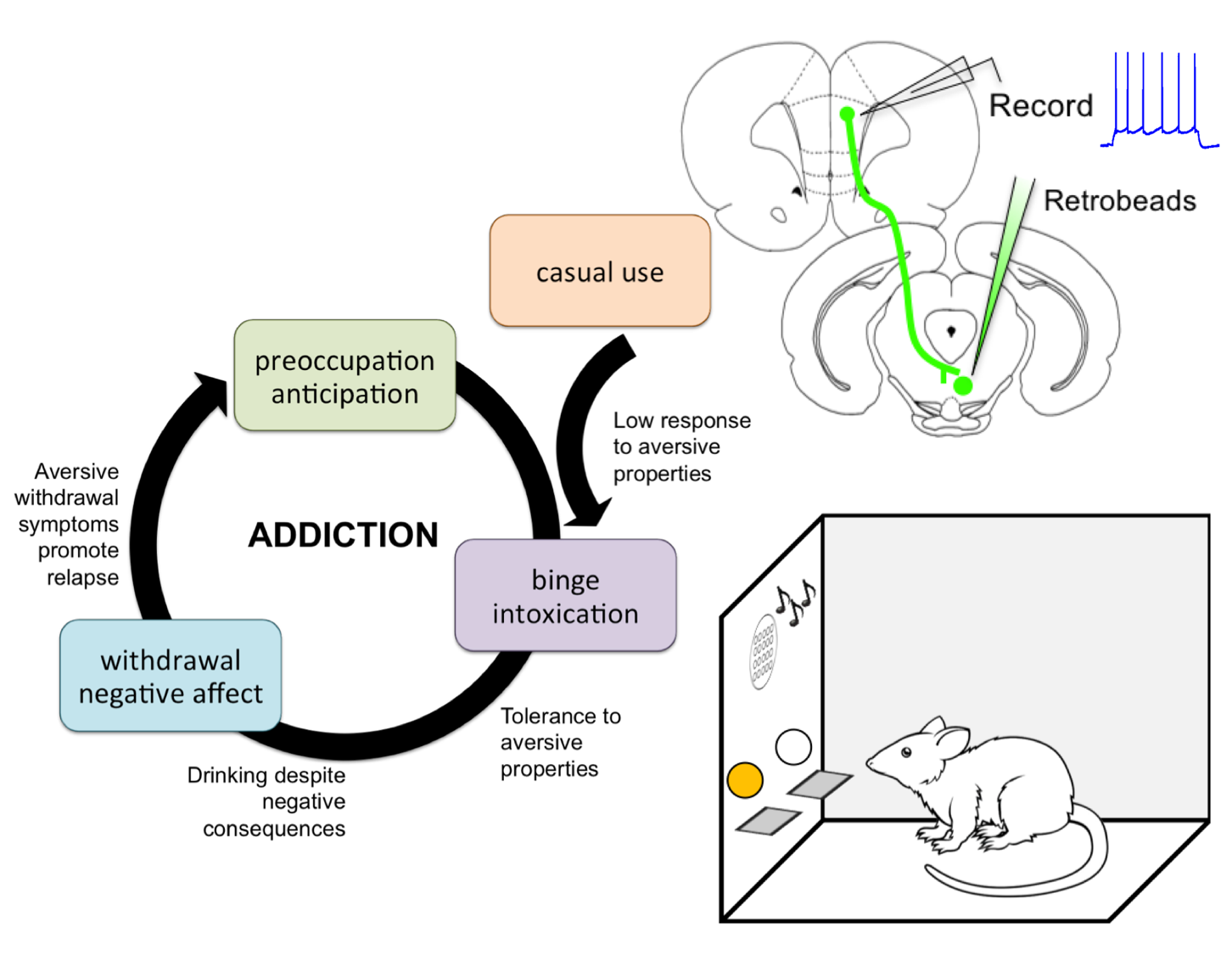Neurocircuitry of aversion
One of the lab's primary focuses is in subcortical regions involved in aversive signaling. Of particular interest are the lateral habenula (LHb) and rostromedial tegmental nucleus (RMTg). The LHb sends excitatory inputs to the RMTg which, in turn, exerts inhibitory control over midbrain dopamine neurons (among other things). Research over the last decade has revealed that this circuit is critically involved in negative reward prediction error and driving behavioral responses to aversive stimuli. We are interested in investigating the function of this circuitry and the role that inputs from the prefrontal cortex (PFC) play in modulating activity in these regions in the context of neuropsychiatric illnesses including addiction and mood disorders.
Anatomy & function of cortical inputs to the RMTg
Little is known about the anatomy and function of inputs from the PFC to the RMTg. Using circuit-specific approaches including virally-mediated tract tracing techniques, in vivo optogenetics, in vivo calcium signaling, and ex vivo slice electrophysiology we are working to characterize the density of cortical inputs to the RMTg, their ability to modulate aversive responding, and plasticity that results from exposure to aversive stimuli.
Effect of chronic alcohol exposure on mPFC-RMTg circuitry
Aversion plays a significant role in addiction, but it is not well understood how the neurocircuitry responsible for aversive signaling is altered during alcohol exposure. The PFC undergoes significant plasticity following chronic alcohol exposure but few studies have explored how that plasticity differs within discrete subcortical projections. Our lab is using circuit-specific approaches to explore these outstanding questions in the field. Pairing findings from circuit-specific ex vivo slice electrophysiology studies with results from in vivo calcium imaging and opto- and chemogenetic experiments will allow us to better understand how cellular neuro-adaptations lead to maladaptive behaviors that impede recovery.





